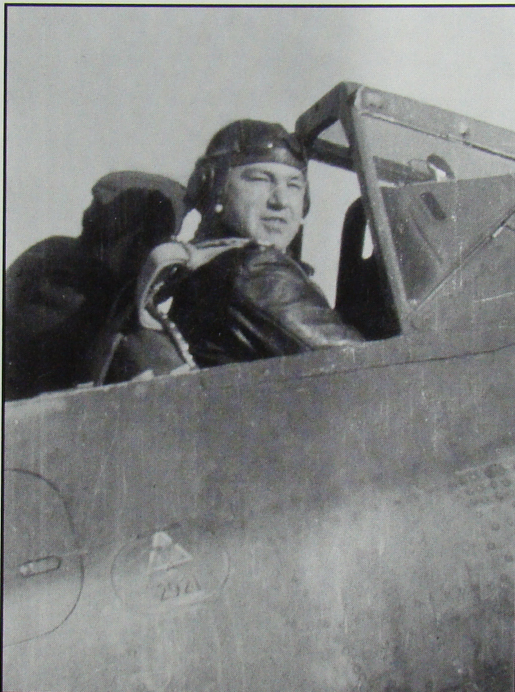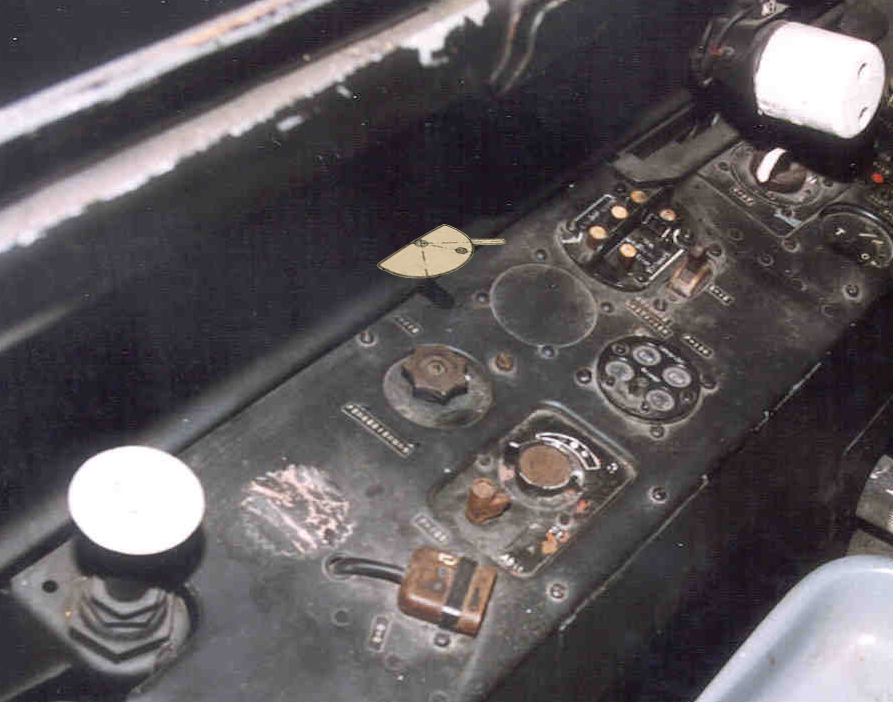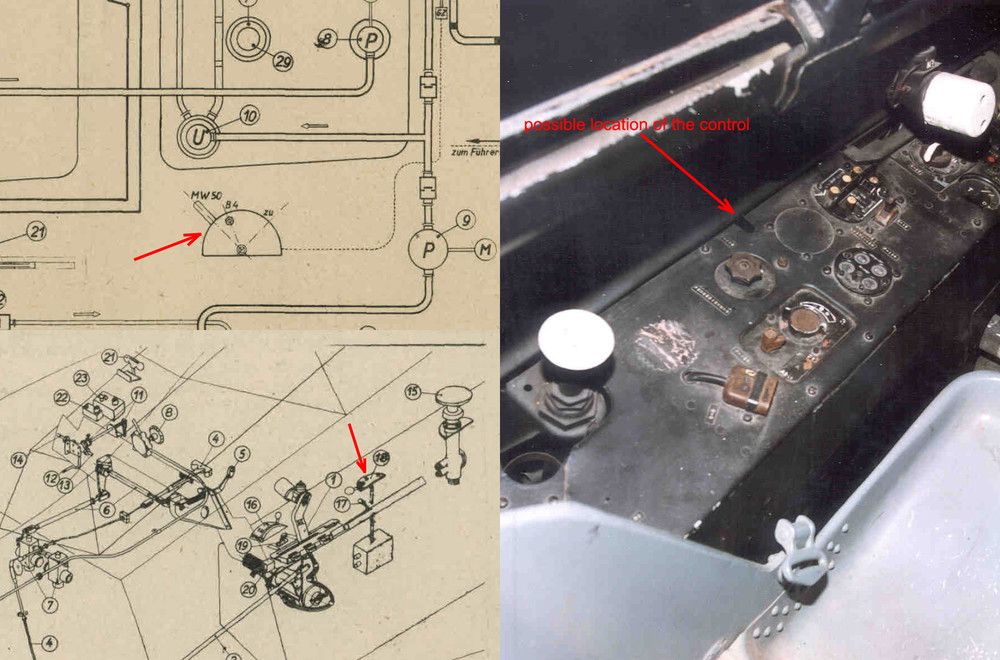-
Posts
447 -
Joined
-
Last visited
-
Days Won
2
Content Type
Profiles
Forums
Events
Everything posted by Fox One
-
I decided to make my own comparison. I think Ala13_ManOWar is right – the main gear legs should be tilted forward more. I did an approximate angle measurement – from current DCS angle, they should be tilted forward about 4.5 deg more – WOW, didn’t expected the difference to be that big!
-
:thumbup:
-
The canopy hinge was fitted only to Fw 190 early-type “straight” canopy. In DCS we have a late-type, so called “blown” canopy. This doesn’t have a hinge, only the forward canopy framing is split. Here I explained how it works and you can also see a canopy drawing from a D-9 technical manual: http://forums.eagle.ru/showpost.php?p=1750432&postcount=347 Related to this thread – you can see the canopy forward framing has a “pin” in its upper part, that when canopy is closed, it enters the central hole in the A-frame. Here are hi-res pictures of a late-type canopy, the plane is an F-8 but it doesn’t matter, D-9 canopy is completely identical: To my knowledge, on this F-8 is the only original late-type Fw 190 canopy remaining in the world! On D-13 “yellow 10” the canopy is a replica, but it is a decent one, unlike D-9 W.Nr. 601088.
-
:doh: This entire thread is about a specific part of the plane, not about the plane's exterior textures. I deliberately posted a link to a certain picture (showing the windshield's A-frame), not a link to the entire album.
-
Fully agree. This should serve as a model:
-
D-9 pictures ONLY from Jerry Crandall's books. Check A-frame shape and location of the holes in its upper part.
-
VIMANAMAN, great effort. You started this thread being bothered by symmetry in textures, and slowly this turned into a big research project for you. Be careful, or this research might take control of your life :D My opinion – they blindly copied W.Nr 601088, including the wooden part :D In the youtube video you can see landing gear indicator wrongly placed where the radio channel selector should be (see post #3), in post #36 you can see the correct placement before the museum guys swapped them. In your link http://airandspace.si.edu/collections/artifact.cfm?object=nasm_A19600319000 it looks like they finally placed them in correct position, it took them more than half a century… There is 100% certitude the aircraft is a D model. See the reinforcing steel strip riveted on the outside of the fuselage below Barkhorn’s left arm – this is one of the airframe changes from A to D. This plane is also equipped with all the goodies - electrically heated windshield, EZ 42... Also in post #42, pictures 2 and 4 are of new built aircraft, so they don’t really concern this research.
-
D-9 cockpit pictures from Dietmar Hermann’s Focke-Wulf Fw 190 "Long Nose” book. On the label above radiator flaps control wheel it is visible “Auf” on the left and “Zu” on the right. In DCS it’s the other way around.
-
Here it is. This is the cockpit of precisely the same plane that appears in post #3 in this thread, pictured before restoration. Original handwritten inscriptions are still visible. Some have wondered why they have chosen this plane with the wooden part as a model. Well… they didn’d have much to chose from. This is the only original D-9 remaining on this planet. Except for the canopy, propeller spinner, tires and a few very minor bits, it is completely original. Except for this plane, other D-9 planes documented with cockpit pictures – you can count those other planes on the fingers of one hand. Really. The person who made the cockpit model – he is not a specialist. I can completely understand he believed the wooden part was a real part of the plane. But actually having to try to “demonstrate” the wooden part doesn’t belong there it is really silly. It doesn’t appear in any parts catalogue for any Fw 190 version, technical manuals, manufacture documentation (see post #24) or in any pictures of any 190 of any version other than this particular museum plane. It is not an original part of the plane PERIOD.
-
-
In a D-9 technical manual they actually show the control as a 3 position MW50 - B4 - Closed, not as a 2 position T-handle like in DCS. See in the image below how the control appears to be placed about halfway between throttle and primer pump – in DCS it is slightly behind primer pump. Also see how next to it there is another control, #17 – this is for emergency jettisoning the auxiliary 115 liter tank content. This control and MW50 - B4 – Closed control were probably placed close together, and through the hole in the side panel pointed in the cockpit picture probably went the cables connecting both controls with their respective valves.
-
^^^ I think I should have said "Normally, the bomb lights should illuminate when V24 switch is on and there are bombs attached." According to post #2, it looks like the lights illuminated indicate bomb is attached, so right now in DCS they work correctly:
-
Normally, the bomb lights should illuminate when V24 switch is on. See on the diagram posted here http://forums.eagle.ru/showpost.php?p=2090782&postcount=41 that “Abwurfwaffe” is switched on with V24 switch.
-
Only that what you pointed in the drawing is actually the access panel for filling the 3 liter tank for primer to start the engine. See the location of ladder button below.
-

Armoured glass refraction must see video
Fox One replied to MA_Goblin's topic in Military and Aviation
How much the refraction is shifting the image vertically can be approximated reasonably well from such pictures (A-5 and D-13): -

Armoured glass refraction must see video
Fox One replied to MA_Goblin's topic in Military and Aviation
My fear is that this problem can't be resolved properly without implementing refraction. Let’s say they simply make the cockpit bar 2-3 times narrower. That’s great, now the lowest part of sight’s reflector plate won’t be obscured anymore. The problem is that now the plane’s nose starts to be visible a lot more than it should. IMO that’s precisely why even when raising a bit the cockpit view for landing until the nose is visible, the visibility forward-downward is so poor, complicating landing approach. Because without refraction the plane’s nose appears in the windshield higher than it should. Because of refraction, probably in reality MG 131 guns cowling “bumps” were barely visible from the cockpit, if at all. -

Armoured glass refraction must see video
Fox One replied to MA_Goblin's topic in Military and Aviation
Awesome video!!!!!! WOW!!!!!!!!!!!!! -
Nice find!!!
-
^^^ Totally agree.
-
So… take off with neutral stick in pitch is supposed to be impossible? OK While I usually do the takeoff “three-point” like it was done IRL, for the sake of demonstration here is a track where I do the takeoff with stick COMPLETELY PUSHED until the speed in outside view is about 140Km/h. I advance the throttle completely right from the beginning and I don’t use any differential wheel braking at all to keep the plane straight. Really no need to use brakes. Watch how aggressive I work the rudder. This was done with a X52pro with stick twist for rudder control, no rudder pedals here. With rudder pedals this becomes a piece of cake. Really. As 159th_Viper already said – nothing is impossible. stick push.trk
-
According to Fw 190 A pilot's notes, to unlock the tail wheel it is necessary to push the stick forward of its neutral position for approximately 3cm. It is highly likely this wasn't changed for Dora.
-
...and all such parts with altenative wooden construction are clearly pointed out in plane's parts catalogue. I'm not seeing any wooden windshield A-frame there. The windshield's A-frame was made of high-strength steel and it had quite a sturdy construction, as it was designed to save pilot's life if the plane overturned. But hey, feel free to believe it was made of expanded polystyrene if you want, who am I to stop you...
-

[FW 190D-9] FW190D9 Stab_SG 2 Grossenhain 1945 Sneakpreview
Fox One replied to Mainstay's topic in Fw 190 D-9
Looking great so far! -
Speculation on my part as to why they put the wooden part: The museum got the plane without the canopy, for whatever reason. They built a ridiculous caricature of a replica canopy that is on the plane to this very day. Because the canopy fitted quite poorly to the windshield leaving a noticeable gap, they added wood to fill that so it doesn't look that bad. See the fit of the replica canopy, manufactured to the highest precision standards :D
-
^^^ All pictures you posted are of Fw 190 D-9 W.Nr. 601088 from an US museum, all taken after restoration. In Jerry Crandall's book Fw 190 Dora, vol 1 there are a few very rare colour cockpit pictures of precisely this particular plane, taken before restoration. There is no wood...















